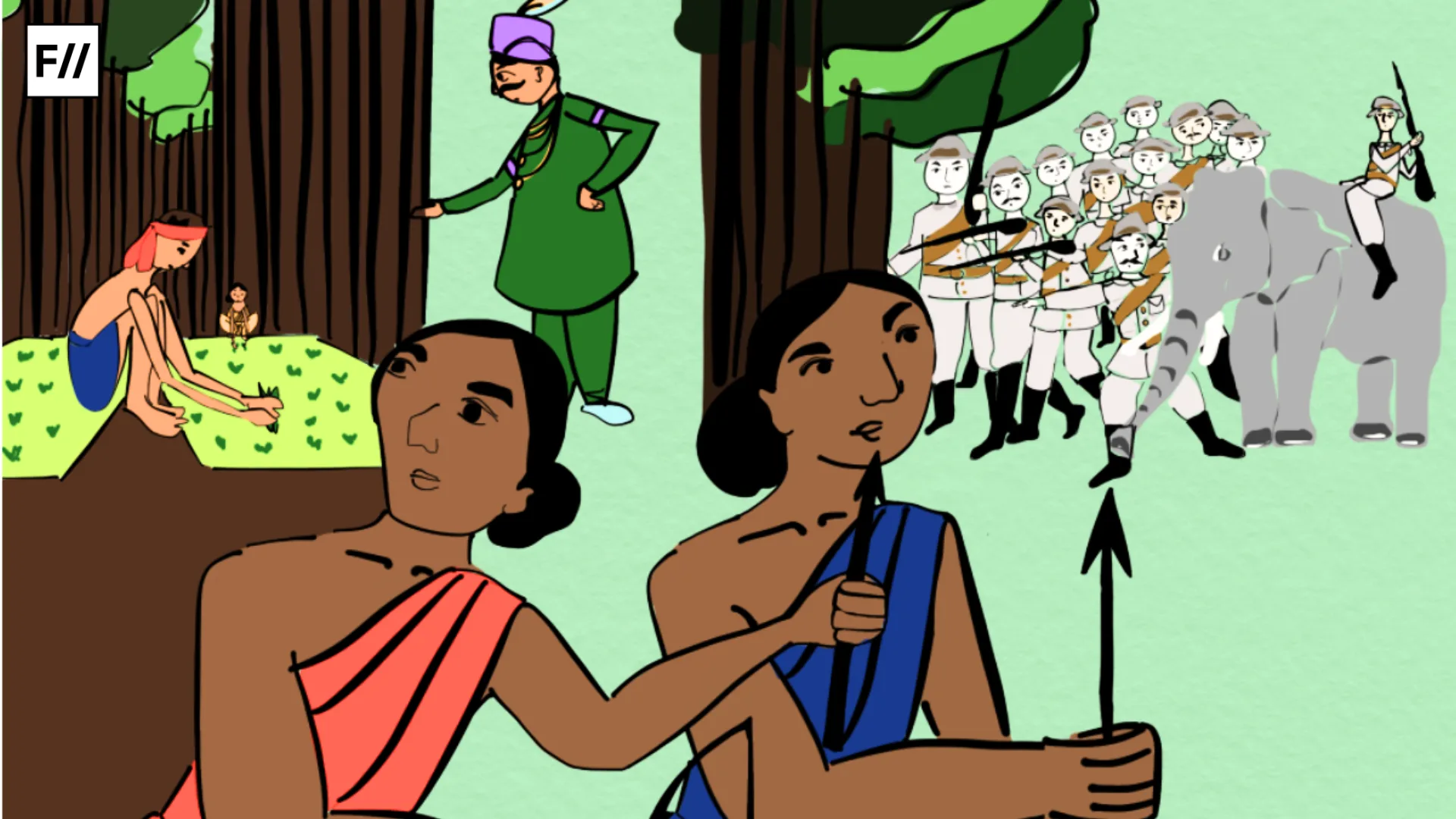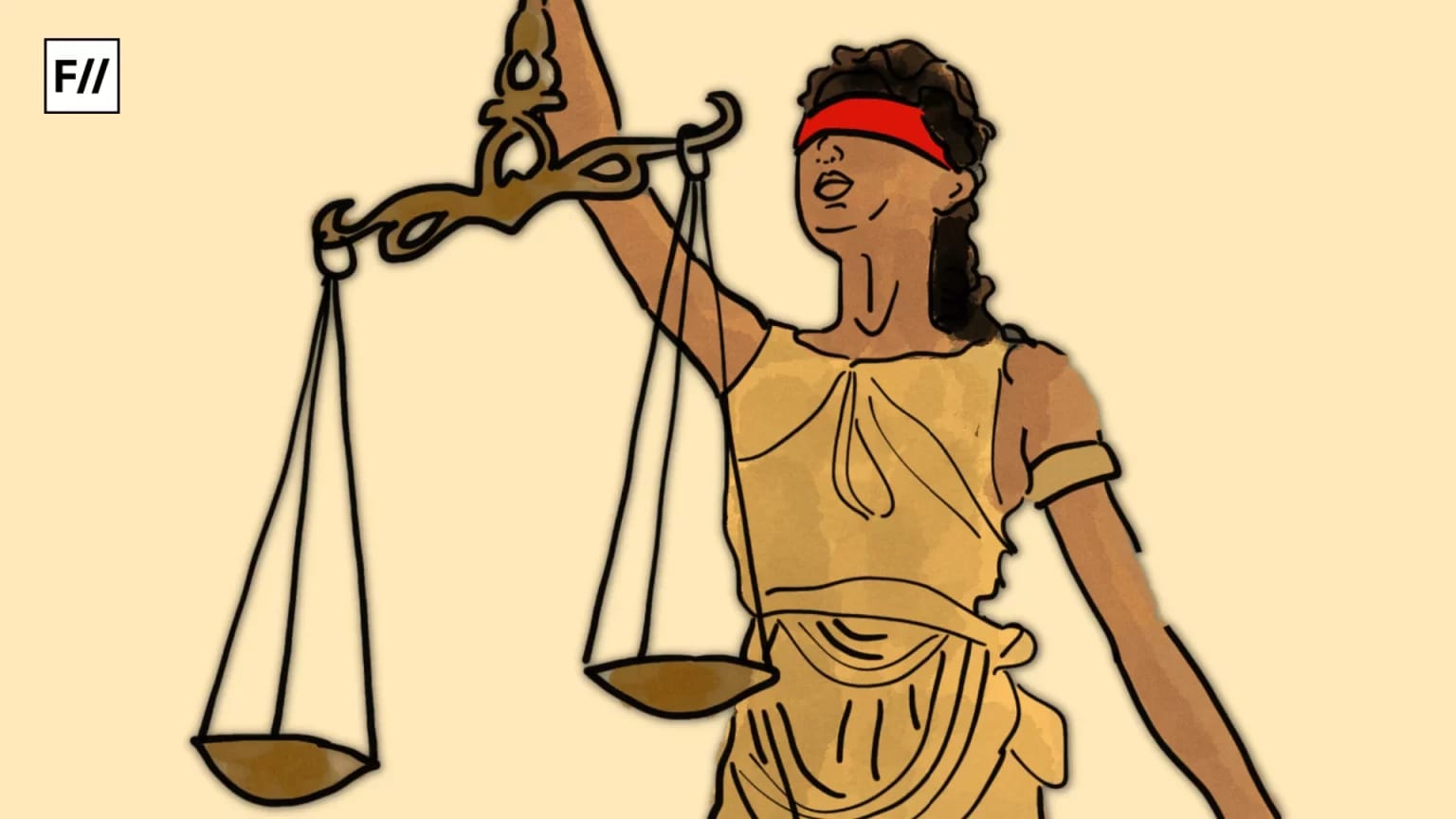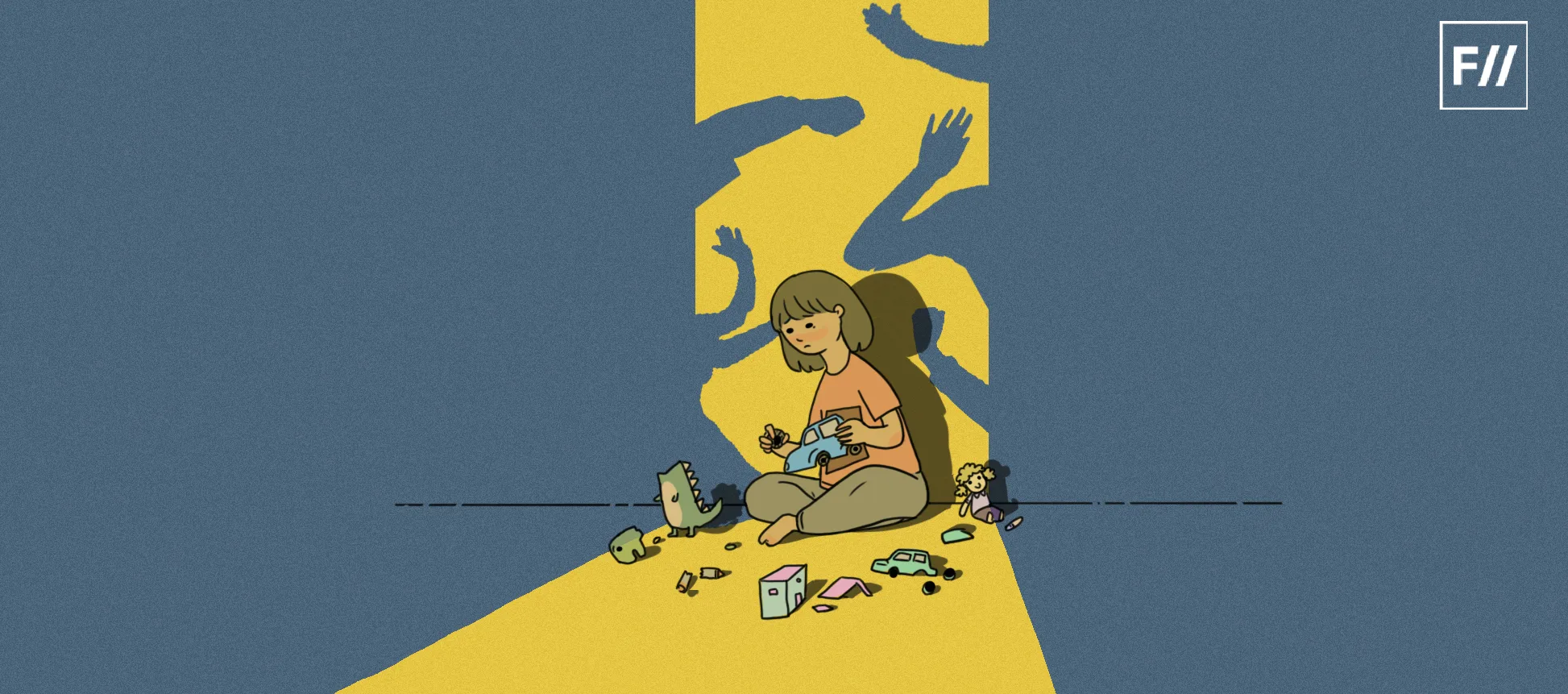A statistic posted by the Sabar Institute highlighted the miniscule percentages of Adivasi and Scheduled Tribe (ST) faculty in higher educational institutions in West Bengal. With around 6% of the Scheduled Tribe population in the state, it is essential to raise questions about their rightful representation. Jadavpur University has a Scheduled Tribe (ST) faculty representation of about 2.51%, while the Indian Statistical Institute (ISI), Kolkata, has no faculty belonging to the Scheduled Tribe. On account of Karam Puja on September 3rd, the West Bengal government had declared a state holiday. While it is essential to honour Karam Puja, working towards their development and inclusion is of utmost importance.
Boycotting the Jangal Mahal Utsav
The West Bengal government has been organising the Jangal Mahal Utsav for the last ten years. This year, the celebrations that are aimed at preserving the arts and crafts of tribal communities were met with a boycott. The call for a boycott was explained by a press conference held by the West Bengal Scheduled Tribe Welfare Association (WBSTWA). The boycott had stemmed from a disregard for essential development for the communities. The Chief Minister, Mamata Banerjee, had ensured “development” for the Jangal Mahal region, yet the protests and boycotts suggest otherwise. The state government and its opposition are shifting blame, while the communities fall behind.
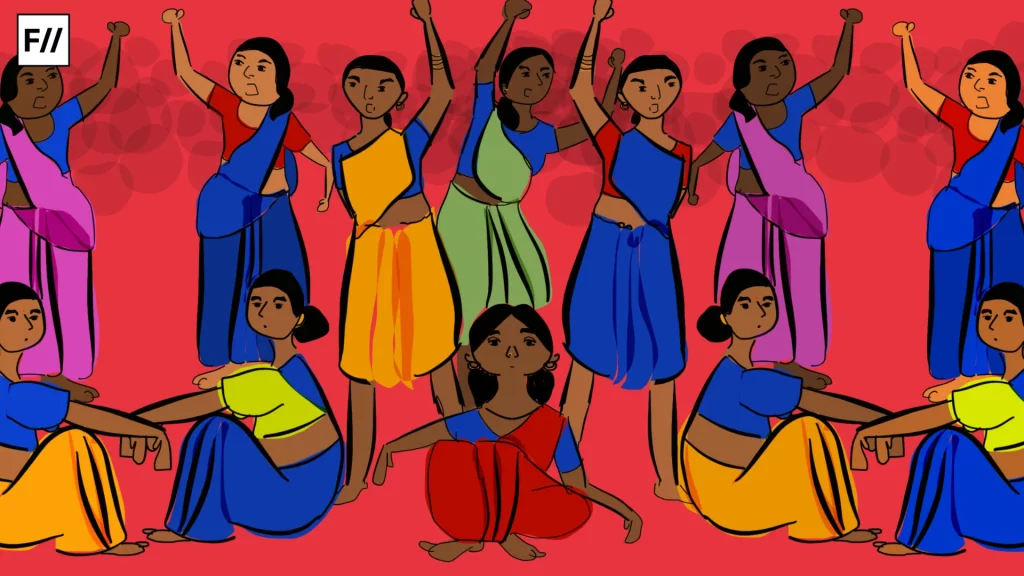
Education and employment opportunities have always remained a concern, but the lack of basic amenities has led to malnutrition in the Jangal Mahal areas. Shabar villages in Bengal’s Jangal Mahal lack basic educational amenities. A report by the Wire brought forward how the villages lack access to schools. Neglect and lack of teachers make the schools all the more nonfunctional. The dire state of affairs suggests an overhaul of the system that breeds this systemic inequality.
Discrimination in academic circles and retaliation against Adivasi reservation
In an interview with The Caravan, Professor Maroona Murmu reflected on the discrimination that takes place within “liberal” university spaces. An associate professor of history at Jadavpur University, her merit was called into question by online trolls when she expressed her opinion that students’ lives mattered more than in-person examinations during COVID-19. Her opinion led to anti-reservation posts, comments, and hashtags being circulated all over social media. The story not only dispels the notion that West Bengal is casteless but also highlights the anti-reservation attitudes in university spaces. She shared how the conception of “merit” needs to be revisited. A widespread resentment against caste-based reservation was reflected by student interviews. The government-mandated reservation policies challenged the academic demography, which mainly consisted of upper-caste, middle-class, and male populations.
In an interview with The Caravan, Professor Maroona Murmu reflected on the discrimination that takes place within “liberal” university spaces. An associate professor of history at Jadavpur University, her merit was called into question by online trolls when she expressed her opinion that students’ lives mattered more than in-person examinations during COVID-19. Her opinion led to anti-reservation posts, comments, and hashtags being circulated all over social media. The story not only dispels the notion that West Bengal is casteless but also highlights the anti-reservation attitudes in university spaces.
The challenge to the hegemony was not well received. A research paper published in 2022 revealed how reservations for girls (14%) were received warmly, but the same warmth had not been extended to the SC/ST/OBC community. When Feminism in India reached out to an educator in Kolkata, Dr Sohini Saha expressed her observations while teaching “Writing the Adivasi” by Prathama Banerjee. She told how the students she taught held a “sympathetic-progressive outlook” but saw Adivasis as homogenous, “other”, and egalitarian individuals. She taught Prathama Banerjee’s text in order to challenge the notion, but she found it a little demanding. She noted that when students are expected to move beyond the “stereotypical” constructs, they find it difficult to break through them. It is indeed essential to move beyond the homogenisation of the Adivasi community and not put them into predefined boxes.
Adivasi Students’ struggles and misrepresentation of the Adivasis
A student who has pursued her graduation in Kolkata recounted her experiences. She said, “After school, I was very anxious about how I would adjust with students from privileged caste and class backgrounds. During my university orientation, I kept looking for Adivasi students in my class, trying to read people’s faces and features, hoping to find someone like me. I felt alienated in the classroom. It wasn’t that I was bad at making friends, but I feared discrimination. I was even scared to share my surname, because the follow-up questions often brought disappointment.”
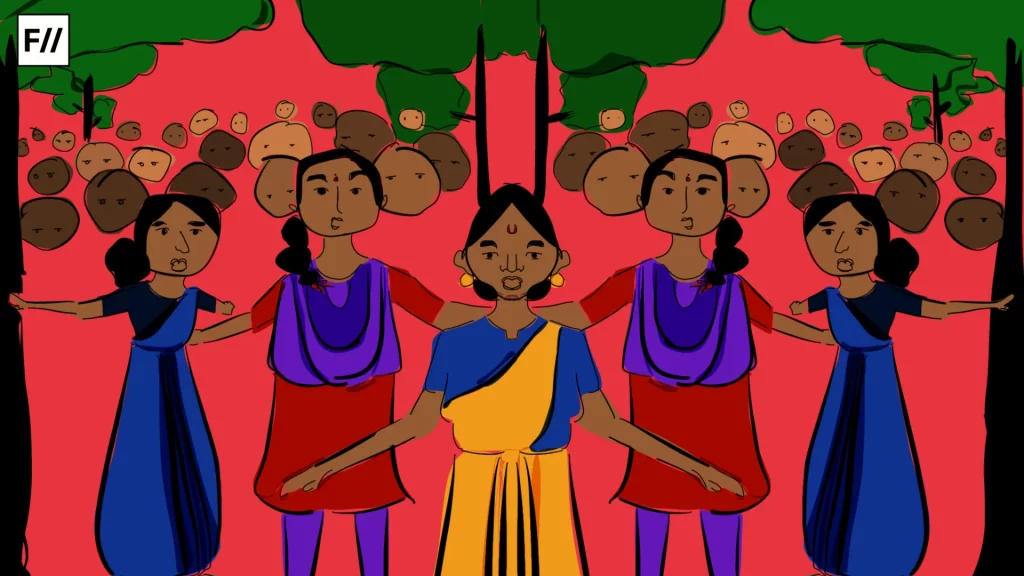
An ethnographic report published by the People’s Rural Archive of India (PARI) suggests multi-faceted causes of low literacy levels. One of the causes is “…not being liked by teachers and fellow students…”. The report suggested that “alienation” from the education system, as a whole, is a reason behind students dropping out. The Right to Education made education free and compulsory for children up to the age of 14. A 2023 news report revealed that the highest percentage of children who were out of school belonged to tribal regions. This outlines the extreme marginalisation and unreliability over socio-economic reforms.
“I believe that students mixed with me because I “looked” like one of them—English-speaking, convent-educated, financially stable, and Christian (since, for some reason, people think Christians are “cool”). “These small things were very clear to me,” said the student, highlighting her lived experiences in a public university in West Bengal. The support for Christianity comes from a place of “colonial hangover”. It was the religion of their colonial masters, with whom the Bengali “bhadraloks” actively formed an alliance. The exclusion of Adivasi students stems from the educators’ negligence and active discrimination. The PARI report highlighted how the educators’ belief system contributed to their exclusion. Instances were brought up where teachers believed that Adivasi students did not “deserve” an education. This was their justification for neglect. Since their formative years did not prepare them for higher classes, they had to face ridicule from students and teachers alike.
Linguistic barriers and the under-representation of mother tongues have often left parents in disarray. While a percentage of the population are willing to learn in Bengali or Hindi, despite it not being their other tongue, others are not. Some tend to choose English due to greater availability of opportunities. Although it would be easier for some to learn in their mother tongue, a lack of resources prevents them from doing so.
“Most of the time, Adivasi struggles and our history are not taken seriously. Even in school, we studied chapters on Hinduism, Sikhism, Mughal history, etc., but Adivasi history was reduced to just an 8–10 line paragraph. That’s it. This lack of representation and misrepresentation affects us deeply. As students, we face many obstacles in academic spaces because people either have no proper knowledge about us, or whatever they know is biased,” said the graduate student from West Bengal. Negative and stereotypical representations of the Adivasis in the school curricula have hindered their upliftment. Disaibon Hul is a children’s book that talks about the Santhal Rebellion of 1855. A retelling of their stories, and writing them without treating their roots as ‘exotic’ or ‘unfamiliar’, is being done. Ruby Hembrom is doing exactly that. The website of the West Bengal Tribal Development Department outlined all year-round celebrations and cultural festivities.
With no ‘real’ developmental models in place, the Lodha Shabar community is gradually dying of starvation. Inclusion of Adivasi history, movements, and their struggles in the curricula shall be a step forward in ensuring inclusivity within classrooms. Teachers and educators should receive compulsory training on developing inclusive pedagogical practices. Instead of shifting blame, the governmental institutions should look into ensuring proper implementation of affirmative programmes. Financial support and encouragement should be provided to Adivasi writers to propel books in their mother tongues. Thus, while cultural festivities and public holidays to commemorate festivals are necessary, they should not impede ‘genuine’ development.
